by Christopher Thompson | Jul 26, 2018
There is a three-by-eight-foot raised garden bed nestled between the Cardiovascular Center, the Cancer Center and Med Sci I. It is the Medical Campus Garden, and this year it is host to a crowd of tomato plants, lettuce, kale, basil, peppers, marigolds and chard. A plaque explains that it is maintained by medical students, but encourages passerbys to pick whatever is ripe or ready. At this point in the summer, the lettuce and chard are well picked. There are bunches of green cherry tomatoes that unfortunately won’t be ripe until after I’ve left Ann Arbor for our short summer break. The basil has had no problem outgrowing the aggressive reach of the tomatoes and makes the garden smell good with each watering.
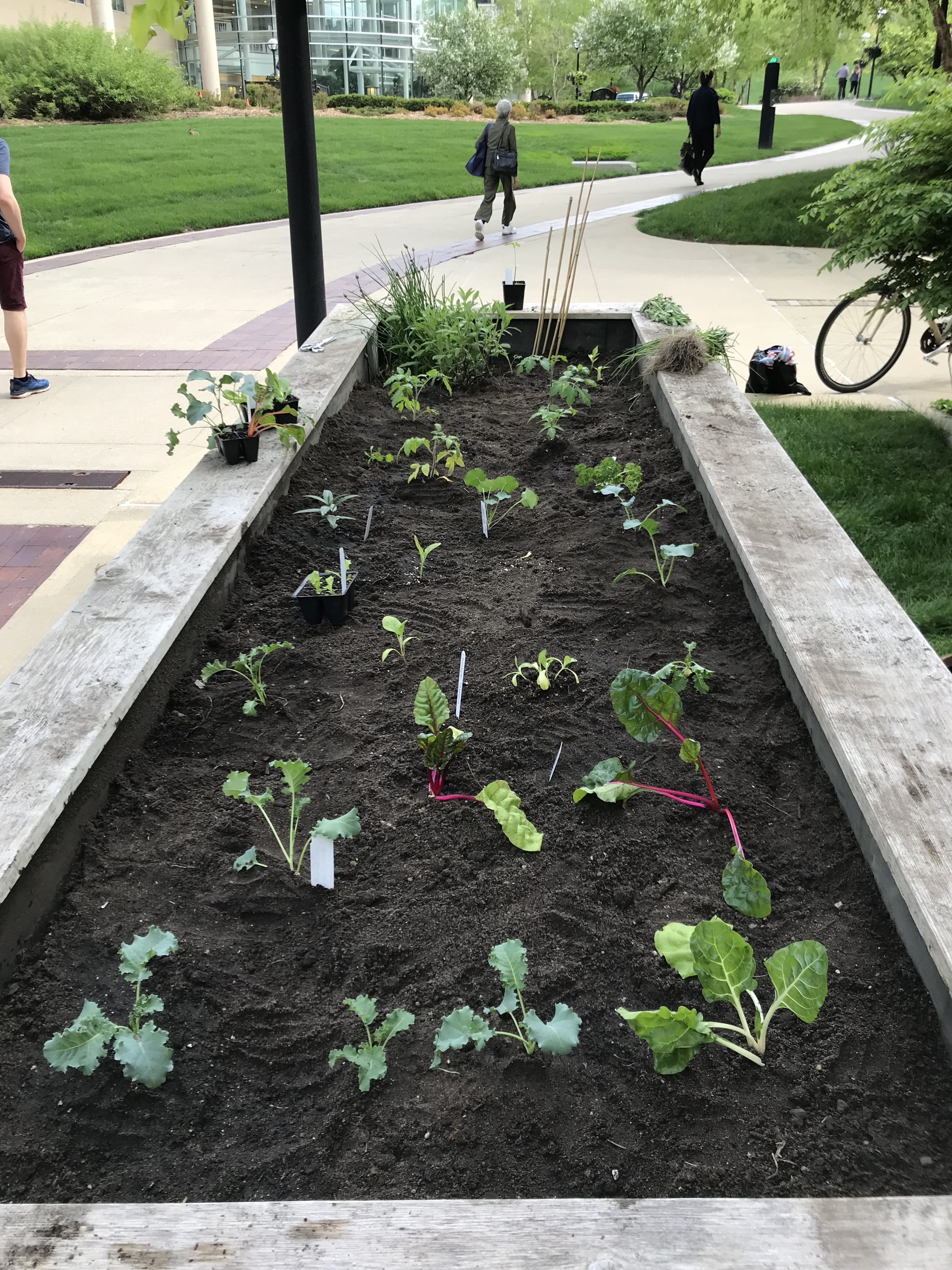
The garden plot!
Here in Michigan, the garden is a project of late spring and summer. The winter – my first one in Michigan — was long this year with snow well into spring. To celebrate the change of seasons, the Medical Campus Garden, a hodgepodge of students who have gardened or like the idea of gardening (me), organized a spring planting event as part of the April Wellness Week. Students tilled, fertilized, and then planted seedlings while enjoying salami, cheeses and fresh fruit generously supplied by the Wellness Pillar in M-Home.
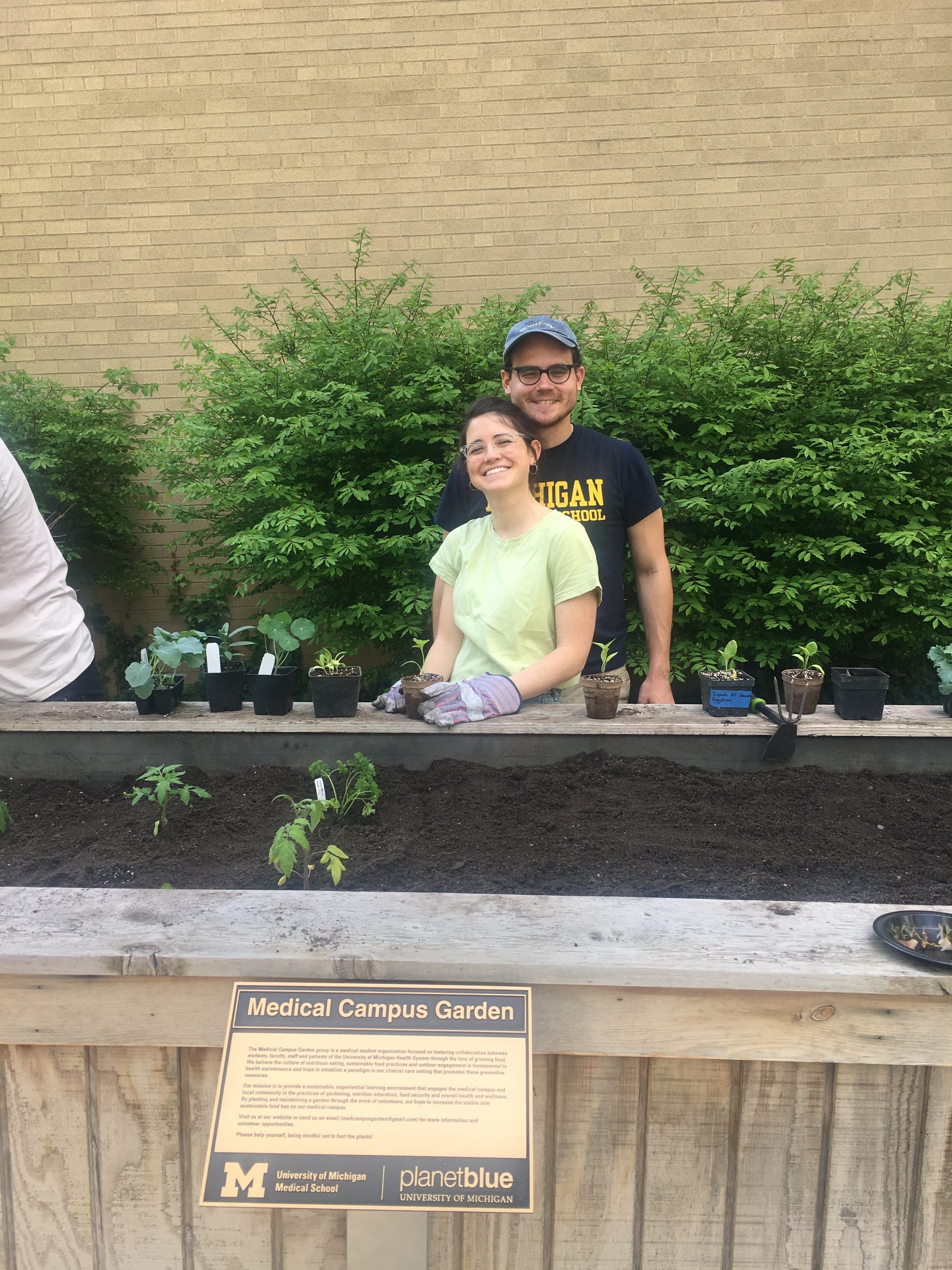
The author with Annie Minns M1.
It is quite shocking how different life is in Michigan in the summer versus the spring. Thunderstorms, humidity, evenings spent swatting mosquitoes on my patio have all certainly defined this summer for me. The weather and its milieu of activities – going on runs, walks (to the ice cream store), reading outside – certainly make school more manageable. Thunderstorms roll in in the afternoons and rain gives relief. A couple times a week I water the garden, pull weeds, and nibble on the one or two ripe tomatoes.
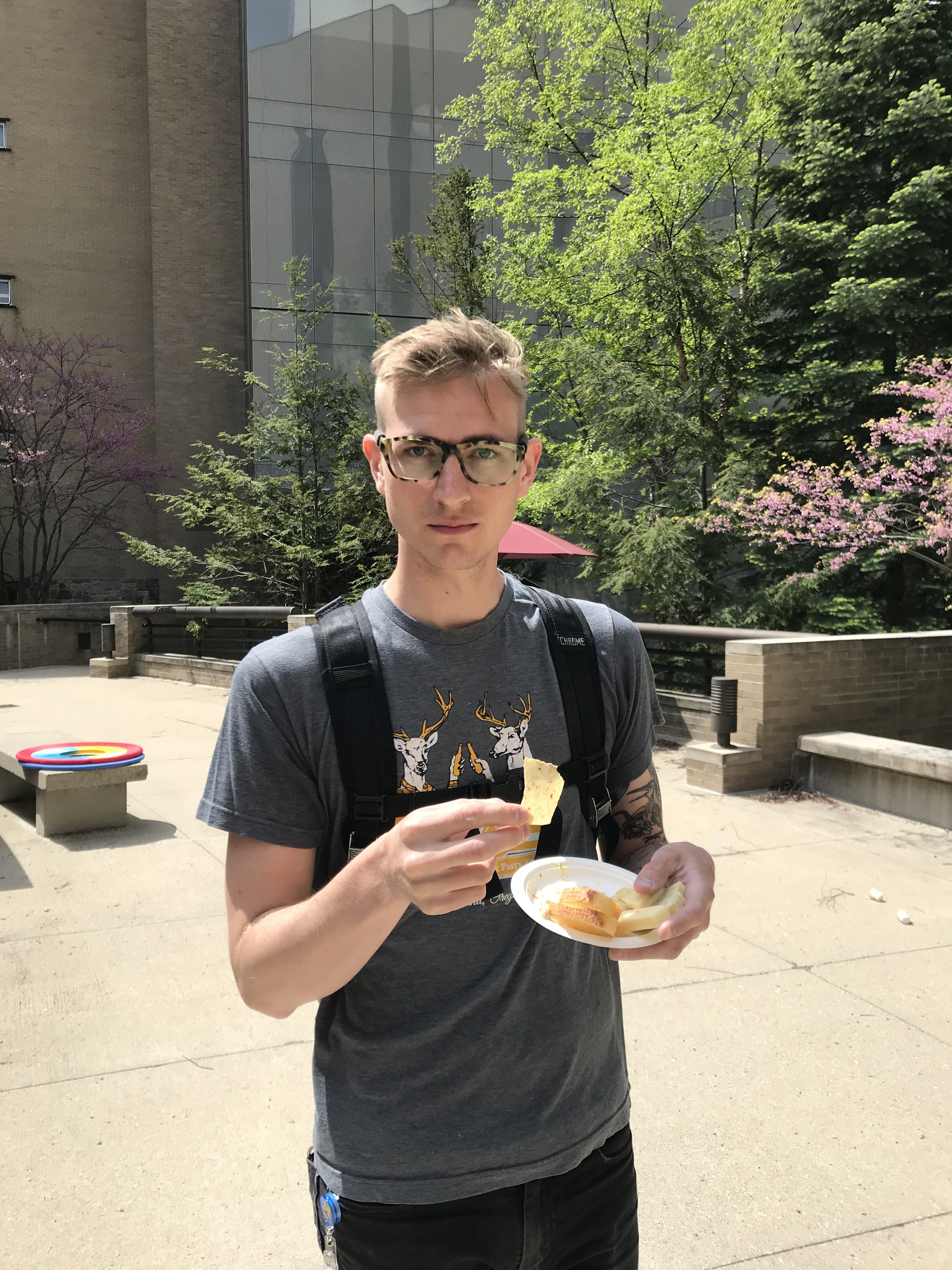
Brycin Riley M1 and Garden Club member enjoys snacks during Garden Club-hosted Wellness Week.
This week marks my 52nd of medical school. It’s been a year since my white coat ceremony and I’ve taken dozens of quizzes and tests at this point, streamed many, many hours of lectures, and spilled coffee on my white coat five or six times. It is a blur of a year, strung together by organ sequences and the change of weather. We planted the half-foot seedlings sometime in April – in the middle of our Neurology sequence when dementia, movement disorders, and locating lesions were of utmost importance. I made a Waldorf salad in mid-June with the lettuce from the garden. We were in Infectious Diseases then, perhaps learning about parasites or maybe fungi? Last week we finished Psychiatry, our last sequence before we begin our clinical education, and the tomatoes had just begun to ripen.
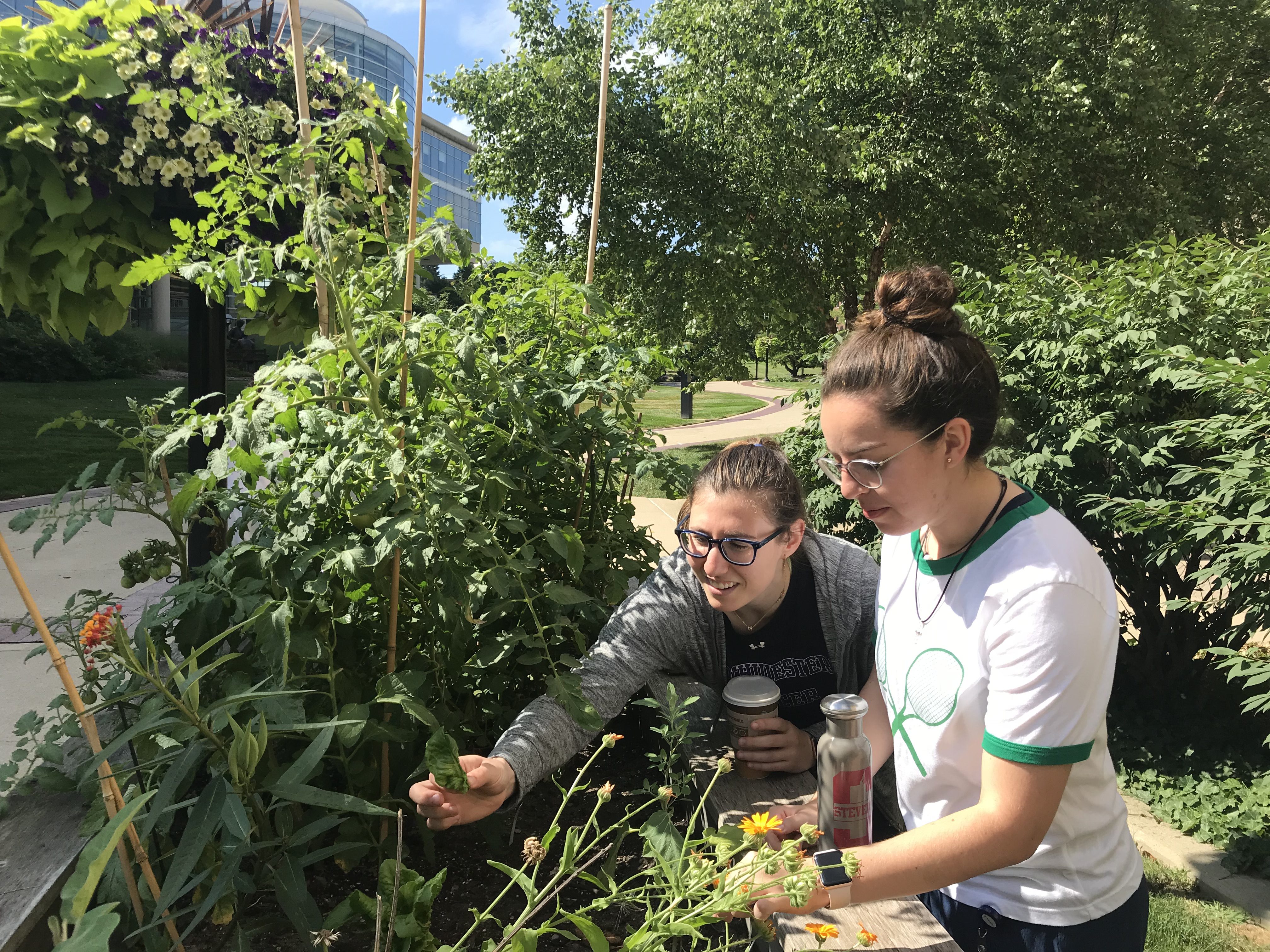
Rachel Bergman M1 and Maria Santos M1 examine the lettuce.
In September we’ll return as M2s and after a month-long bootcamp begin our clinical rotations. While I won’t be tending to it, the garden will grow on until it gets cold and the last of the tomatoes have been picked. Hopefully, we’ll find some M1s to retill and replant in April or May next year. I’ll be in my internal medicine rotation and perhaps stop by the garden on my way home after clinic. I hope volunteers from this year’s crop — from the seeds of fallen fruit, basil, milkweed and parsley — populate the garden and carry a little of this summer into next.
Christopher is a first-year student at the University of Michigan Medical Student. He recently completed a post-bac at Scripps College and is interested in Ob/Gyn and palliative care. He enjoys exploring Ann Arbor and eating ice cream.
by Christopher Thompson | Apr 12, 2018
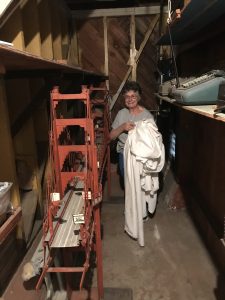
The author’s Yiayia with her father’s model built during the Golden Gate Bridge’s construction from its scraps.
My family’s been on the same San Francisco hill for the last one hundred years. Emigrating from Greece in the 1910s and 1920s, my great-grandparents built the first house on the block (48th Avenue then was a sand dune) and ran restaurants on the road that wraps around the hill and connects the Outer Richmond to Ocean Beach. My Yiayia raised her family a block away, the home in which my mother was raised. Standing in front of her house, looking down 47th, you see the city sweep out down the peninsula – Golden Gate park interrupting rows of houses ending at the beach and ocean.
I’m from Kentucky, a landlocked state known for its rolling hills. I now live in southeast Michigan, an area that is as boggy and flat as it is beautiful.
Seven months into my first year of medical school, spring break was not only a much-needed change of pace but also a change in landscape. Visiting San Francisco for the week, I didn’t stream any lectures, review flashcards or localize hypothetical lesions. But I did explore San Francisco. It meant familiar walks: through Sutro Park, down past the Cliff House, and then the flat, windy walk along the beach. Or along the coastal trail below Legion of Honor, where you turn a corner and there’s the Golden Gate Bridge spanning the entrance to the bay. I know these routes well and they are for reflection and quiet appreciation.
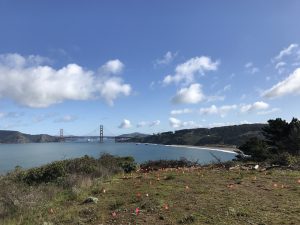
The mouth of the bay.
Some of the exploration is new. One afternoon I take a bus, and then the metro, before climbing a hill to Corona Heights Park. Although there is less wildlife, navigating the subways is also a lesson in topography. It begins with a descent and ends with a climb up and out. Breezes are produced mechanically and carry the smell of oil and other things of a city. I read in the park and wrote a bit.
In Ann Arbor I often take walks. I notice the slight hills and admire houses in Kerrytown and the west side of the city. I let my mind wander between lectures, or in the evenings when I’m done for the day. I’ll walk in all sorts of weather – I’ve made good use of my coat this winter. Ann Arbor is full of reminders of the medical school. There’s the corner where I did tag days for Galens, right by the State Theater. The hospital, massive and lit up at night, can be seen from much of my walk to the Arb and is a sometimes exciting, sometimes intimidating reminder of rotations to come.
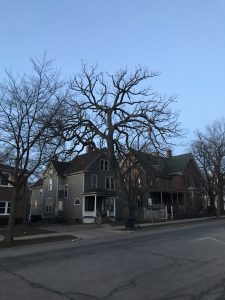
An old tree in Ann Arbor that caught the author’s eye.
For me, the landscape of San Francisco is tied to family. In the mornings, instead of an alarm clock, I wake to fog horns and the creak of the my grandmother moving around the house. My great-grandmother died a couple years ago (at 102!), but we still bake her cookies and tell her stories. I visit her house and weed her sandy backyard.
This landscape grounds me because it is a reminder of where I come from – my family, as well as who I am without quizzes, pre-clinical training, or medical ambition. I can read books and my mind doesn’t wander to things I need to get done. I can walk without a timeframe.
Spring break is over and M1s have finished Neurology. The days are getting longer and yesterday it snowed as the sun set and I found a little of the peace I had over spring break. Even though my family isn’t here and I can’t hear the ocean, the Arb was quiet and I noticed flowers beginning to spring up.
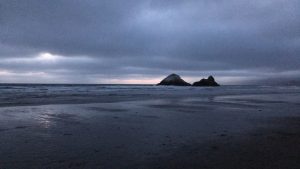
Ocean Beach at dusk.
Christopher is a first-year student at the University of Michigan Medical Student. He recently completed a post-bac at Scripps College and is interested in Ob/Gyn and palliative care. He enjoys exploring Ann Arbor and eating ice cream.
by Christopher Thompson | Feb 26, 2018
May of my senior year of college I was in a show called Deadsville. I remember standing backstage before our final performance trying to appreciate that this would probably be the last show I ever did. I loved doing theater – the check-ins, late rehearsals, camaraderie and silliness. I loved walking into a space and giving myself permission to let everything else fall away. That last performance I tried to acknowledge the enormity of my leaving behind something that I had invested so much of myself in over the previous eight years.
However, that sense of loss was to come slowly over the next three years. It came to me during my post-bac year at a puppet show when I felt dearly the lack of performance in my life, of abstraction, and language that pushes me. It came to me last semester at times when schoolwork seemed tedious.
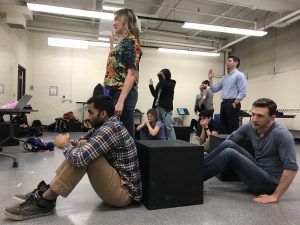
A typical rehearsal night.
And then I auditioned for the annual musical roast, the Smoker, and it was like I was a theater kid again. Three nights a week I step into a character with a funny voice and goof around. I work in the shop, painting, using a jigsaw and chatting with M4s about what specialties they’re going into. The shop smells like paint, paint thinner and sawdust – things distinctly not of Taubman library.
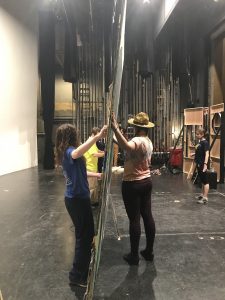
Setting up Mendelssohn theater, preparing for tech week.
With that said, the Smoker isn’t an escape from med school but an expansion of what med school means. The show is all about medical school – it’s filled with allusions, references and inside jokes. Each character is a professor. The program includes a glossary of medical terms and professor bios for the uninitiated. The directors, actors, singers and dancers are all my classmates. One practices surgical knots in the corner, another reads Ob/Gyn case studies between scenes.
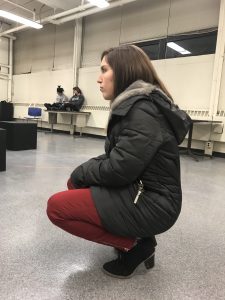
Suzie trying out Method Acting to get into character.
It has been strange and so fun to find such an intersection of my interests. My left brain and my right brain are both very happy (if not exhausted). During the day I’m memorizing reproductive anatomy, learning about the HPO axis, or practicing a physical exam. In the evenings I’m singing, blocking entrances and goofing around. At times, finding the energy to accomplish everything I need to has been a challenge, although Smoker rehearsals have certainly been more restorative than taxing. New friends, performance and creativity from so many people (costumes, set-building, the script, etc) goes a long way. It’s also fun to be part of Smoker traditions: I have Dr. Sisson’s white coat hanging in my closet safe from chocolate or coffee stains that have defiled my own white coat. I’ve learned much Smoker lore and even attended Smoker karaoke night.
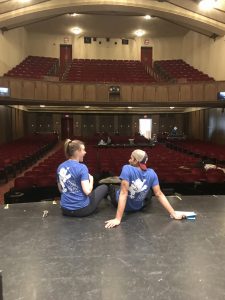
Two of the Smoker Czars taking it all in.
With three more years at Michigan, I don’t have to worry this will be my last show.
You can see Christopher and the rest of the Smoker cast this Friday and Saturday at Mendelssohn Theater performing Harry Polyp and the Deathly Hematochezia. Buy tickets here:
https://www.eventbrite.com/e/harry-polyp-and-the-deathly-hematochezia-the-100th-galens-smoker-tickets-41433164711
Christopher is a first-year student at the University of Michigan Medical Student. He recently completed a post-bac at Scripps College and is interested in Ob/Gyn and palliative care. He enjoys exploring Ann Arbor and eating ice cream.
by Christopher Thompson | Oct 19, 2017
About a month ago, I attended a lunchtime lecture in which the speaker mentioned that a study found the majority of physicians believe their profession is a “calling.” While this figure didn’t entirely surprise me, it was strange that such a significant number of physicians would attach themselves to as loaded a word as calling. What exactly does a calling look like in the 21st century? It certainly retains a sense of the sacred or extraordinary. TV shows, both fictional and real, have explored or leaned heavily upon medicine as something called to. William Osler, the seminal guy doctors quote to other doctors, refers to medicine as a calling. So does Paul Kalanithi, a neurosurgeon who was diagnosed with terminal cancer before even finishing his training.
As a future doctor, I wonder what exactly the substance of my own calling is. For many, perhaps, the personal statement is a good place to start. In fewer than 5,300 characters, we were asked to summarize and produce our own journey to medicine. The admissions process is rigorous and the application extensive. Many callings must be, in so many characters, recorded there. Unfortunately, my personal statement reads more like a disguised tribute to JD and Turk, two lovable TV characters that probably have more to do with this whole thing than I’d like to admit.
Medical school certainly feels like a place to mature into a calling. It begins with the ritualized putting-on of the white coat and ends with a 2,500-year-old Greek oath. And the education of a medical student is extraordinary in the literal sense of the word. One day of our Doctoring Course is devoted to breaking bad news. We spend hours in the Anatomy lab with men and women who have passed away and yet are teaching us. We learn how to use touch as a tool — for example, an afternoon class devoted to inspection, palpation and auscultation.
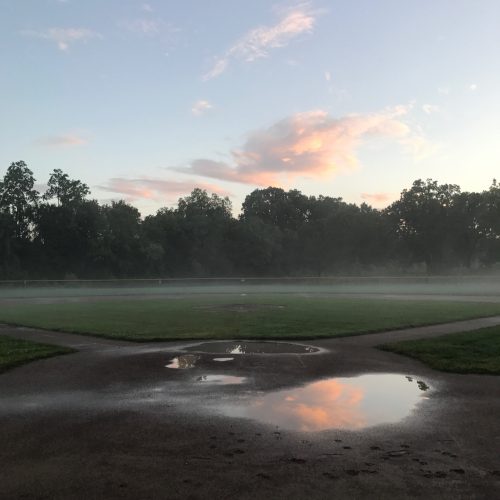
During a post-summer storm run on the west side of Ann Arbor
A calling seems to entail a lifestyle. Medicine certainly seems to. Long hours, scrubs or a white coat, and nights on-call all make a doctor. Are the sacrifices that medicine asks – of your time, attention, and years of training – the substance of a calling? Is a calling a justification for nights spent working and events missed? I think Osler would disagree. In regards to a calling, he says that the heart is exercised as much as the head. A profession that asks so much of us – whether weekend call or your heart – may not be something simply put aside each day after work.
I’m two months into medical school and really don’t know anything about a calling. We’ve begun studying the cardiovascular system and I really enjoy it – I finally see how the things I learn could be used as a doc. I look forward to volunteering at the Student-Run Free Clinic because I want to listen to a heart or take a blood pressure that’s not my classmate’s. I am excited for clinical rotations next year because I can finally apply some of the knowledge I’ve learned to people outside of myself. There’s nothing mystical in these things.
However, I have so much to experience in medical school, residency and beyond. I haven’t yet delivered a baby or placed a central line. I haven’t yet broken bad news to a family or prescribed medication. I haven’t yet made a mistake that could affect someone’s well-being. Maybe a physician’s calling isn’t some artifact of the admissions process or a quote by Osler, but rather a dynamic, uncomplicated thing – work that is challenging and rewarding. This is not unique to medicine at all, but something I’m looking forward to finding.
Christopher is a first-year student at the University of Michigan Medical Student. He recently completed a post-bac at Scripps College and is interested in Ob/Gyn and palliative care. He enjoys exploring Ann Arbor and eating ice cream.
by Christopher Thompson | Sep 7, 2017
This summer I began medical school and started, once again, a search for friends and a community. I’ve moved three times in the last three years – from college in Rhode Island to an exploratory year in Chicago to a post-bac in Southern California. Each move has included an awkward dance of getting to know strangers and making friends. I do have good friends scattered across the country, however each year has meant starting from scratch in someplace new.
Like the many times before, this was the case when I first arrived at Michigan. UMMS has emphasized its commitment to community all the way back to interview day. Our orientation is called “Launch”: an homage to the enthusiastic community-building that occurs during that first week on the medical campus. While a community is built, the process still resembled something of an awkward dance. Hours might be spent repeating our respective undergrad universities, whether or not we came “straight through,” and fun facts sprinkled in here and there. I’m not sure if it was my excitement at being in med school or my fear of making no friends that propelled me forward.
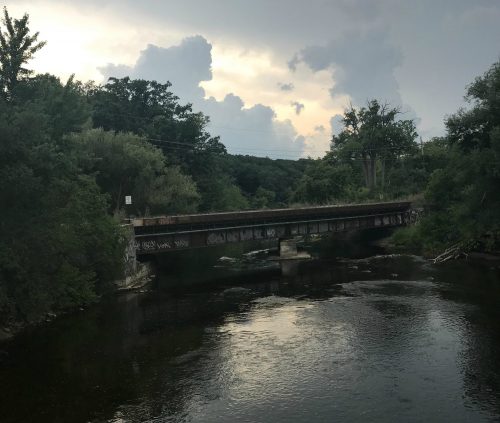 Launch week was as fun as it was exhausting. Free food was plentiful. We had several opportunities to wear our white coats, which feels simultaneously cool and very much like dress-up. (I quickly got peanut butter all over one of the sleeves, making me feel decidedly the latter and not the former).
Launch week was as fun as it was exhausting. Free food was plentiful. We had several opportunities to wear our white coats, which feels simultaneously cool and very much like dress-up. (I quickly got peanut butter all over one of the sleeves, making me feel decidedly the latter and not the former).
Our responsibilities were few: One afternoon I spent four hours floating down the Huron River with about fifty of my new classmates. People drank beer, ate fresh Michigan cherries, and snoozed (it’s a very slow river).
School has started in full force and friendships have accelerated, have been pushed forward by the “we’re all in this together” attitude that pervades the library after a certain hour. We share our experiences in the hospital, the VA, or other clinics we shadow in.
True to Dean Gay’s promise, the Michigan community is strong and inclusive. This Saturday is Michigan’s first home game and friends are scrambling to quiz by Friday to enjoy the game. I’ll often visit the slounge (the student lounge) to interrupt other students camped out in order to socialize.
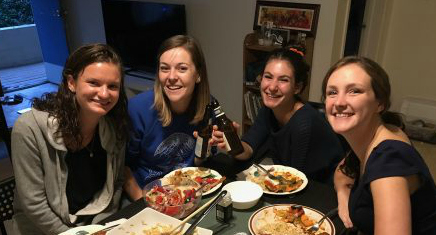 This latest move has offered me another opportunity to not only make new friends, but also continue to ask myself where I find meaning in life. Community is certainly one answer, and I am thrilled to have found such a vital one here in such a short amount of time.
This latest move has offered me another opportunity to not only make new friends, but also continue to ask myself where I find meaning in life. Community is certainly one answer, and I am thrilled to have found such a vital one here in such a short amount of time.
Christopher is a first-year student at the University of Michigan Medical Student. He recently completed a post-bac at Scripps College and is interested in Ob/Gyn and palliative care. He enjoys exploring Ann Arbor and eating ice cream.














 Launch week was as fun as it was exhausting. Free food was plentiful. We had several opportunities to wear our white coats, which feels simultaneously cool and very much like dress-up. (I quickly got peanut butter all over one of the sleeves, making me feel decidedly the latter and not the former).
Launch week was as fun as it was exhausting. Free food was plentiful. We had several opportunities to wear our white coats, which feels simultaneously cool and very much like dress-up. (I quickly got peanut butter all over one of the sleeves, making me feel decidedly the latter and not the former). This latest move has offered me another opportunity to not only make new friends, but also continue to ask myself where I find meaning in life. Community is certainly one answer, and I am thrilled to have found such a vital one here in such a short amount of time.
This latest move has offered me another opportunity to not only make new friends, but also continue to ask myself where I find meaning in life. Community is certainly one answer, and I am thrilled to have found such a vital one here in such a short amount of time.